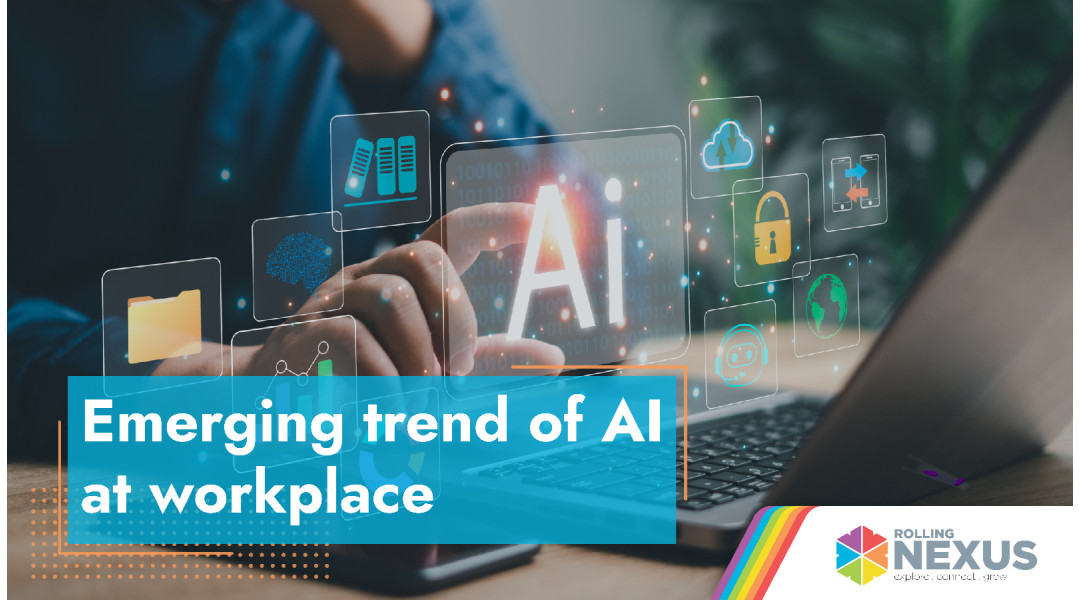

“AI is going to change everything, but it’s going to take a partnership between humans and AI, not a competition.” - Mark Cuban.
Nobody has ever expected the trends of technology and Artificial Intelligence (AI) to reach the paramount level. The influence of AI trends and technology has made greater impacts not only on the field of machinery and engineering but also on businesses, corporations, the medical field, and many more. AI has been introduced in every sector, every organization, and every workplace. From hiring to regulating factors, AI has grabbed a strong position in the HR sector too.
With the increasing trend of AI, human resources or manpower should be aware of the AI space and its trends in the workplace. With remote, hybrid, and digital working models, AI has emerged as a smarter and easier approach for an unblemished working environment. AI is not just a tool for a seamless workplace experience but it can be considered as a strategic partner for enabling the introduction of new ideas and more businesses. What can be the whip-hand of AI in the workplace? Let’s enumerate.
1. Several changes will be foreseen at organizations regarding work expectations, workforce culture, and organizational work models and the partnership of AI will be very significant with the rattling speed.
2. With the emerging trend of AI in the workplace, the need for upskilling employees will crop up as the quintessential part of using AI tools and technologies.
3. With a continuous understanding of AI technologies and engagement with such AI tools, the team dynamics will become more stout and result-oriented.
4. AI tools such as real-time transcription, the use of robotics, and AI technology in call centers reduce the friction of repetitive tasks enabling even the difficult tasks to easy segmentation and ast completion.
5. By freezing out repetitive and bulky tasks into simple ones, AI can help employees to tackle challenges easily such as fatigue, work overload, workplace stress, etc.
The successful integration of AI in the workplace will influence productivity and employee well-being in the organization. In the evolving landscape of the workplace environment, to stay competitive, resilient, and secure the brand position, AI adoption has become a significant sine qua non for the employees and business houses too. Let’s plunge into the emerging trend of AI in the workplace.
When manual manpower is used in repetitive tasks, many errors may occur with the input of lots of effort. With the pace of technological advancement, if AI tools are used to replace manual tasks, human resources may be inclined toward strategic thinking and decision-making. We have discussed AI tools and technology that can be used in call centers in the previous blog. AI-powered automated technologies will generate more fresh opportunities in the job market.
AI will encourage widespread inclusivity, diversity, and equity as AI tools are a boon for employees with disabilities. The use of AI tools such as language-learning models and machine-learning tools will enable them to work equitably in a safer and more inclusive work environment. The AI tools such as algorithm-based speech-to-text and text-to-speech tools for visually and hearing impaired users give access to the employees to dedicate their efforts without any hassles and challenges. More employees from diverse backgrounds are welcomed at the workplace with the utilization of AI tools and technology.
Hiring and laying off employees are some of the challenging tasks for HR personnel. With the use of AI technology, budget reallocation, employee transfers, and position alterations can be experimented creating a diverse and inclusive employee’ funnel. This helps them to address the challenges of biased and implicit judgments, favoritism and nepotism, and other personal decisions. Corporate cuts or layoffs can also be done unbiasedly with the use of AI technology.
Employees have to co-exist with the emerging AI trends and technology and for utilizing such tools, they require specific training. There is a wider scope of learning opportunities for the employees along with personalized training. They need to be proficient in understanding the AI data analytics, concepts and procedures. Hence, upskilling and reskilling programs shape the employees’ caliber to complement the AI systems.
AI tools use data for actionable outputs. With the correct data and forward assumptions, professionals can be involved in decision-making with very minimal challenges. Similarly, AI can maintain team interaction strong by suggesting optimizations, communication patterns, and continuous collaboration. With the data supported by AI, emotional intelligence and critical thinking are enhanced.
The use of AI is slowly becoming vital in all sectors. As industries are revolutionizing with AI, work transformations in many fields have occurred. In a nutshell, AI is to be welcomed by all sectors for possible positive changes and new opportunities in the market.